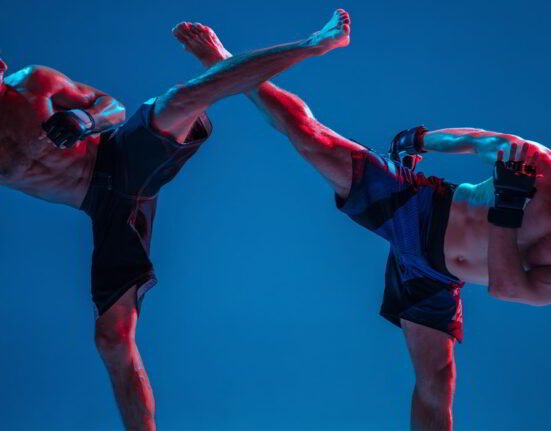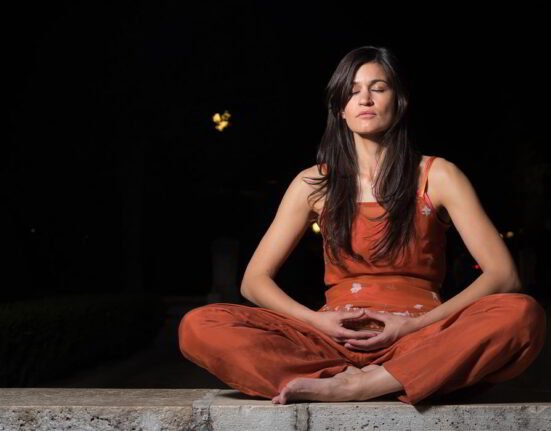Hindu philosophy, spirituality, and cultural practices are based on the ancient sacred books known as the Vedas. They are regarded as one of the oldest manuscripts in the world, having been composed in Sanskrit more than 3,000 years ago. Before being recorded in writing, they are traditionally thought to have been verbally communicated and revealed to sages (rishis).
4 Primary Texts
The earliest of the Vedas, the Rigveda is made up of hymns honouring different gods and cosmic forces. Yajurveda Contains sacrifice formulas and rites utilised in ceremonies. Then Samaveda was Used in ceremonies, primarily consisting of Rigvedic poems and melodic chanting. With its hymns and spells for prosperity, health, and protection, Atharvaveda focuses on everyday living.
What Are These Vedic Approaches?
The teachings of the Vedas are the source of ancient Indian practices known as Vedic methods. To foster harmony with oneself and the cosmos, they emphasise holistic well-being, which combines spirituality, physical health, mental clarity, and moral behaviour.
To achieve self-realization and inner tranquillity, yoga, which has its roots in Vedic teachings, incorporates physical postures, breath control, meditation, and ethical principles. According to the Atharvaveda and associated writings, Ayurveda places a strong emphasis on diet, herbal remedies, lifestyle decisions, and natural therapeutic techniques to promote physical wellness and fend off illness.
The pursuit of wisdom and Jnana (knowledge) is encouraged by Vedic teachings. A subset of Vedic literature, the Upanishads emphasise philosophical investigation, promoting introspection and an awareness of the nature of reality (Brahman). Vedic methods place a strong emphasis on living following Dharma as a way to promote societal harmony and spiritual development. Sacred sounds, or mantras, are an essential part of Vedic rituals. To foster mental clarity, attention, and spiritual connection, mantras are utilised in meditation, healing techniques, and rituals.
What is Emotional Intelligence?
Being emotionally intelligent is similar to being the ship’s captain in a sea that is always fluctuating. Think of the waters as your feelings, which can be tumultuous and turbulent at times or serene and peaceful at others. A competent captain learns to navigate and understand the currents, modifying the sails and course as necessary, rather than ignoring or fighting the waves. In a similar vein, emotional intelligence fosters awareness of both our own and other people’s feelings, enabling us to control and react instead of impulsively.
So Does Vedic Approaches Contribute to Your Emotional Intelligence?
By offering techniques and resources that foster self-awareness, empathy, emotional regulation, and mindfulness—all essential elements of emotional intelligence—Vedic approaches can significantly improve emotional intelligence.
Introspection and mindfulness are promoted by Vedic meditation techniques, which assist people in becoming more aware of their inner thoughts and feelings. People are able to identify emotional triggers and patterns because of their increased self-awareness. Breathwork, or pranayama, calms the body’s physiological reaction to stress and strong emotions by regulating the neurological system.
People can learn to pause, control, and moderate their emotional reactions—especially in trying circumstances—by using techniques like deep breathing or alternative nostril breathing. By training people not to become too attached to certain results or wants, the Vedic notion of Vairagya, or non-attachment, promotes emotional resilience and self-control. Dharma promotes deeds that are in line with compassion and integrity, emphasising moral behaviour and obligations to oneself and society.
Santosha practice teaches us to accept feelings and situations as they are without always aiming for more. This helps us respond to difficulties from a place of inner peace rather than unrest and lessens worry about what we lack. The translation of Ishvara Pranidhana is “surrender to a higher power or purpose.” It helps people come to terms with the fact that they cannot control everything. When faced with unexpected obstacles, like a failed project, someone who practices Ishvara Pranidhana can release their anger and keep their attention on the future rather than dwelling on what went wrong.
The technique of developing unconditional friendliness or compassion towards others, especially in the face of disagreements or miscommunications, is known as Maitri Bhavana. Even with people we may not initially get along with, this exercise builds empathy and connects us to others. Tapas refers to self-control or committed practice. It inspires people to bear hardships or difficulties with endurance and patience.
A person who practices tapas can remain composed under pressure, refrain from making snap decisions, and maintain concentration on their long-term objectives. This emotional fortitude improves problem-solving skills and avoids emotional exhaustion. Through introspection and self-examination, one cultivates Jnana (knowledge) and Viveka (discernment). By identifying what is important in a conversation and concentrating on the main points rather than getting distracted by small emotional triggers, a person who practices Viveka may be able to avoid needless fights.
Some Examples
Many contemporary business titans attribute their increased emotional intelligence to regular meditation, including Bridgewater Associates founder Ray Dalio. He becomes more self-aware through meditation techniques influenced by the Vedas, which helps him stay centred, control his stress, and make thoughtful judgements. By being aware of his emotional triggers, Dalio is better equipped to handle business issues with composure, which boosts team morale and his leadership abilities.
The famous tennis player Novak Djokovic has discussed the use of breathwork, or pranayama, to control his emotions, especially when he is under a lot of strain during high-stakes tournaments. As a key component of emotional intelligence, Microsoft CEO Satya Nadella is renowned for his ability to lead with empathy. His non-violent communication approach and leadership style are in line with the Yama of Ahimsa (non-violence) culture.
The content of Santosha Living a minimalist lifestyle has become popular among those who want to feel more content and less anxious about their belongings. The KonMari Method is a straightforward yet efficient cleaning technique that guarantees you won’t ever clutter and will always make you happy. Introspection, which is basically Swadhyaya, is something that therapy and coaching sessions frequently encourage their clients to do.
Doctors and nurses frequently practice letting go of things beyond their control in high-stakes situations, such as emergency rooms. This is known as Ishvara Pranidhana, or surrender. Rather than being overtaken by results, they concentrate on the act of giving care. Customer service agents who practise Maitri Bhavana (Cultivating Friendliness) treat all interactions with compassion and understanding, especially when dealing with challenging clients. Online retailer Zappos is renowned for teaching its staff to treat consumers with sincere kindness and consideration.
But How Do I Do It?
You can lessen your anxiety and maintain your attention on the process rather than the result by engaging in Aparigraha, or non-attachment.
Step 1: Make a Decision
“My goal is to present well, not to control others’ reactions,” you should tell yourself.
Step 2: Pay Attention to the Procedure, Not the Result
Consider the procedures: conducting research, planning your presentation, and practice. Put aside your concerns about how it will be perceived and give each part your whole attention.
Step 3: Maintain Calm by Breathing
Take a deep breath for four counts, hold it for two, and then release it for six. Do this several times. Remember that you’re ready, and that’s sufficient.
Step 4: Give Up Control over the Outcome
“I release any attachment to how others react,” you tell yourself in your mind.
Step 5: Consider What You’ve Learnt
Consider, “What went well? In the future, what would I do differently? Put more emphasis on your own development than on approval from others.
These age-old methods have special significance in a society where emotional intelligence is becoming more widely acknowledged as a necessary component of both professional and personal success. Future generations’ emotional intelligence may be improved when schools and colleges embrace mindfulness and emotional regulation training.
Vedic approaches may also serve as inspiration for curricular frameworks that encourage self-awareness, compassion, and non-attachment from a young age. Aparigraha (non-attachment) and Viveka (discernment) provide special instructions for responsible and conscientious digital interaction in the modern day. The Vedic methods offer a comprehensive basis that can enable people to live with more equilibrium, resilience, and purpose as emotional intelligence becomes more and more important.
References +
Benjamin, B. (2017, December 15). How Empathy Created $250 Billion in Market Value for Microsoft. IHHP. https://www.ihhp.com/blog/2017/12/15/empathy-created-250-billion-market-value-microsoft/
Boyer, R. W. (2012). Vedic Principles of Therapy. EXPLORE, 8(1), 26–39. https://doi.org/10.1016/j.explore.2011.10.006
Kondo, M. (2024). About the KonMari Method – KonMari | The Official Website of Marie Kondo. Konmari.com. https://konmari.com/about-the-konmari-method/
Radovan Savić. (2024). Vedic Perspective. Scribd. https://www.scribd.com/document/500183450/Vedic-Perspective
Scipioni, J. (2021, December 18). Billionaire Ray Dalio credits his success to 40 minutes of meditation per day — here’s how he does it. CNBC. https://www.cnbc.com/2021/12/18/billionaire-ray-dalio-how-transcendental-meditation-helps-me-succeed.html
Turner, A. (2024, August 16). Breathwork and Sports: Insights from Novak Djokovic. The Breathing Practice -. https://thebreathingpractice.co.uk/breathwork-and-sports-insights-from-novak-djokovic/
vedantabharata. (2013, November 14). Emotional Intelligence Vedic and Modern Perspectives. Vedantabharata. https://vedantabharata.wordpress.com/2013/11/14/emotional-intelligence-vedic-and-modern-perspectives/
Waldron, J. (n.d.). How Zappos Wins at Customer Service Every Day. ETail Palm Springs 2022. https://etailwest.wbresearch.com/blog/how-zappos-wins-at-customer-service-every-day













Leave feedback about this